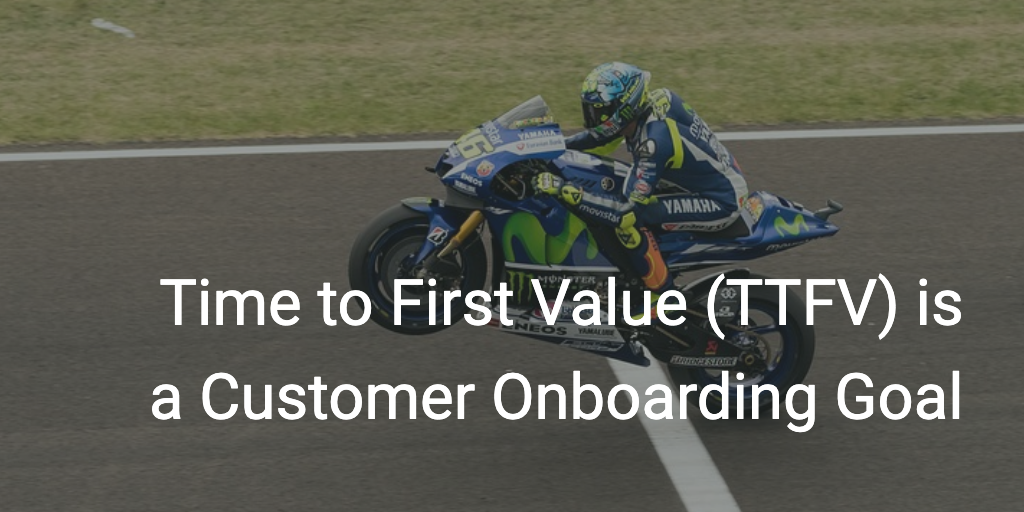 Time to First Value (TTFV) is a commonly used Customer Engagement metric to measure the efficiency of the customer Onboarding process.
Time to First Value (TTFV) is a commonly used Customer Engagement metric to measure the efficiency of the customer Onboarding process.
Unfortunately, the way this metric is used is almost always wrong.
Time to First Value (TTFV) is the amount of time between the close of the sale and when the customer is Onboard.
Your customers are considered “Onboard” once they get actual value from OR (in more complex scenarios) see the real value potential in – outside of the promises made by marketing and sales – their relationship with you.
Let’s dig in…
TTFV is a Customer Onboarding metric that is really just a goal.
Every customer makes progress on their own cadence, on their own schedule, on their own timeline.
But you have to set a goal for them.
You would like [customers in this segment] to achieve [first value] in [some amount of time].
Again, they either get actual value from the relationship with you or, for the first time, see the real value potential in the product or in the relationship with you.
Maybe you want them to achieve that milestone in 30 days.
That’s just a number you made up that you’d like to hit.
And as you learn more about your customers, improve your product and your processes, etc. you’ll readjust your TTFV goal.
No matter, some are going to achieve that goal in three days.
Some might take 45 days.
For those that take longer than your goal, you need to intervene and just make sure that everything’s good.
It might be fine, but it’s a goal, and you want to make sure that if things aren’t fine, you’re still keeping them on track.
You would want to intervene before the 30 days is up if you see that they’re not on track.
You can look at your overall TTFV to see how things are working at a macro level, but you can also look at how individual customers are progressing against the goal and take appropriate action.
TTFV should also figure into Customer Engagement KPIs like Success Vector.
Just to be 100% clear… if your goal TTFV is 30-days and a customer hits 30-days… that doesn’t mean they got value and should be considered Onboard at that point.
Their status should not change to Onboard until they actually get value.
Obviously, right? If you think that then you’d be shocked at how many times I’ve seen companies flip the customer’s status to “Onboard” after some time frame is reached instead of being based on the customer’s actual progress.



